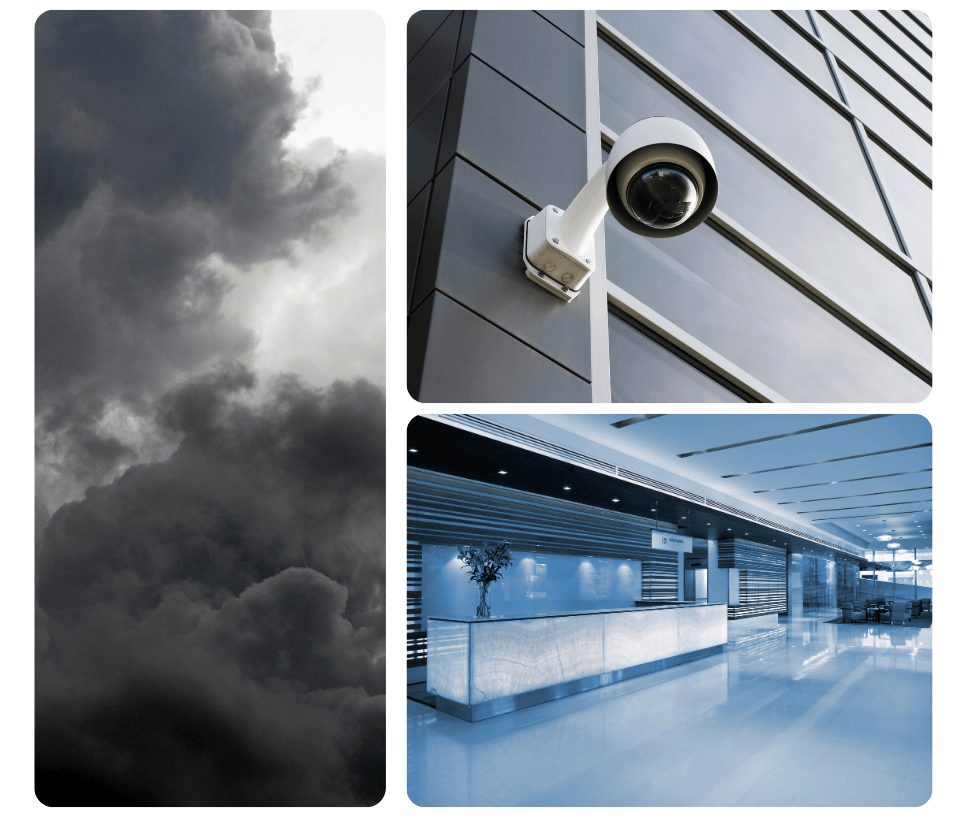Security And Emergency Preparedness
BOMA’s Preparedness Committee works and collaborates with industry leaders on ways to improve emergency preparedness and increase building resilience. The committee serves as a resource to ensure members have the best tools to respond appropriately and recover quickly from emergency situations, natural disasters and other building security issues. Learn more about how you can be the most prepared real estate professional in the industry with the resources below.

CRE Industry Preparedness Resources
A safe building is a well-run building. Keeping building occupants safe should always be a top priority for property professionals. BOMA has compiled resources and considerations to prepare for potential threats to your building and use them as an addition to your own emergency preparedness plan.
BOMA's Civil Unrest Guide
BOMA’s Civil Unrest and the Election Season gives you the tools you need to make preparations and minimize potential disruptions related to both federal and local elections.
BOMA's Emergency Preparedness Guidebook
BOMA has created the industry’s most up-to-date guide to help property professionals identify, prepare for and respond to a broad range of potential threats. The guidebook walks the user step-by-step through the four phases of emergency management to help ensure tenant safety and building security during emergency situations.
Progressive Emergency Response Planning for Commercial Real Estate - Free Webcast
In today’s uncertain world, many property professionals are wondering how best to plan for the unknown when an emergency situation develops. This webcast delivers essential tips for your team to prepare for and respond to a potential event—and bring your building back online as soon as possible.

Federal Preparedness Resources
BOMA works with a number of federal partners to ensure that our members have access to the most up-to-date information to keep their buildings and systems secure.
- American Red Cross
- American Red Cross - Disaster and Safety Library
- Crisis Event Response and Recovery Access (CERRA)
- Department of Homeland Security
- Department of Justice
- FBI Tips and Public Leads
- Federal Emergency Management Agency
- FEMA - Ready.gov
- FEMA - DisasterAssistance.gov
- FEMA - Business and Industry Guide For Emergency Management
- GSA Emergency Response
- National Hurricane Center
- National Incident Management System (NIMS)
- NIMS Guideline for the Credentialing of Personnel
Natural Disasters Affecting Commercial Real Estate
Floods
While floods may occur with little to no warning, there are steps that can be taken to minimize the damage when you do receive flood warnings. First and foremost, ensure that all occupants know how to safely evacuate the building and, when evacuation is not possible, know where within the building to safely await assistance. After occupants’ safety is addressed, focus on limiting damage to the building. Begin by: relocating building contents to floor levels that are above the anticipated flood levels, de-energizing electrical equipment serving portions of the building that may become flooded to reduce shock-hazard, protecting points of entry with sand bags or other methods of limiting water intrusion, and preparing pumps and hoses to extract the water.


Hurricanes
Most buildings and facilities along the Atlantic and Gulf Coast have been designed to resist the effects of high wind damage sustained during hurricanes and coastal storm surges. Building codes require that glazing and garage doors are impact resistant or are provided with impact resistant coverings in wind-borne debris areas and that the roof structures are continuously tied into the foundation to limit uplift. These provisions prevent the most vulnerable portions of the building from being compromised by strong winds and water intrusion which can significantly impact the ability of the building to be utilized after a storm.
Wildfires
Building owners in areas most susceptible to wildfires should make sure there is adequate and unimpeded access to their properties for the fire department in the areas around and leading to their buildings. Regulations require that wall assemblies and roof coverings meet certain fire-resistance ratings and/or use-only, ignition-resistant materials. Buildings should be provided with ample defensible space surrounding the structure clear of accumulated debris, such as leaves, yard waste, and brush. Regulations also may include having an adequate supply of onsite water—especially for buildings that are located in areas that are not serviced by a municipal water supply.
